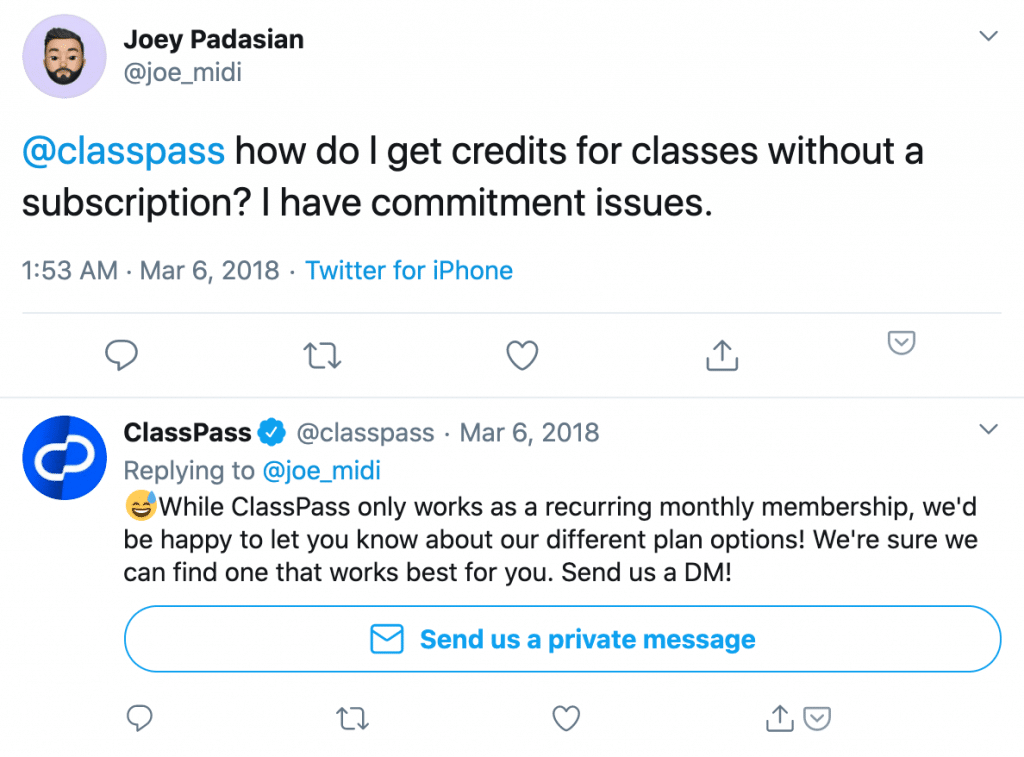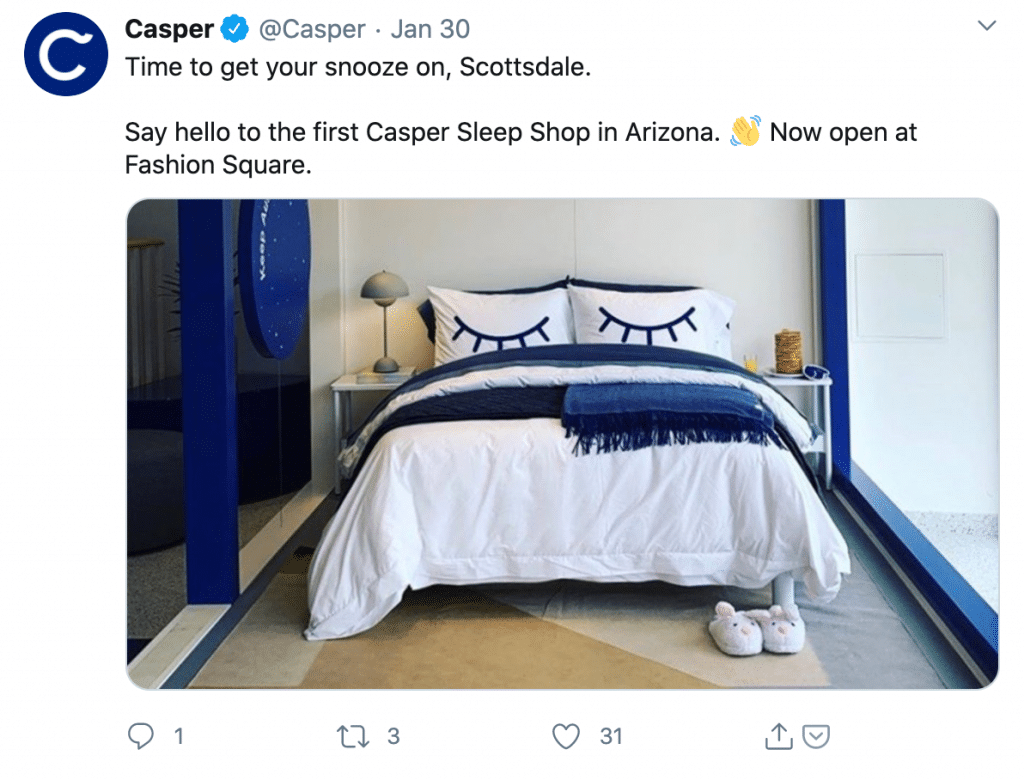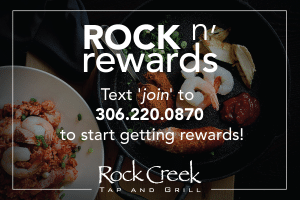So you’re curious about customer engagement? We’ll get to that in a bit. But first, let’s do a little experiment.
Pull out your smartphone and find the voice assistant app—Siri if you have an iPhone and Google Assistant if you’re an Android user. (If you’re with Alexa, that works too.)
Now tap the microphone command in the app and ask:
“What does customer engagement mean?”
If you followed us through this experiment, you didn’t just listen to the Wikipedia definition of customer engagement—you experienced customer engagement first-hand as it happened to you.
All this to say, customer engagement encompasses the different types of interactions a brand has with its customers through all possible avenues. It’s a combination of offline and online communication that takes place when a brand reaches out to its customers (or vice versa).
Instead of asking the voice assistant to define customer engagement, you could have also asked:
“Add Money Heist to my watch list.”
Or
“Call Riverdale Costco.”
Or
“Yoga studios near me.”
… And you’d have gotten a pretty accurate solution for your queries. But those brands in question put in the work to make this information accessible to you.
In this post, we’ll look at:
- A quick history of customer engagement
- Why customer engagement is so important
- The 4 different types of customer engagement
- 3 real-life examples of what great customer engagement looks like
- How your business can implement customer engagement in 3 steps
🔍 How can you spot a disengaged customer? We’ll tell you. Find out how to identify (and win back) a disengaged customer with our free checklist.
A quick history of customer engagement
Customer engagement before the internet or before social media was pretty much a dud. Most brand engagements were limited to the confines of in-store experiences, direct mail advertising, and the occasional courtesy call from your favorite brands.
But somewhere between 1998 to 2004, digital platforms started to explode—and opened new opportunities for customer engagement.
Brands could now engage with their customers who were sitting in their living rooms fiddling with their mobile phones. It also meant customers could reach out to brands through new channels like social media—even in the wee hours—to get what they wanted.
For businesses that took advantage of the new rules of engagement, customers flocked to their brands like barnacles clinging to corals (and we’ll take a look at a few good examples of customer engagement in the sections below).
[ebook-download title=”How customer-obsessed is your business?” link=”https://netstorage.ringcentral.com/documents/quiz_how_customer_obsessed_your_business.pdf” cta-text=”Take the quiz” src=””]
Why is customer engagement so important?
Engaging your customers isn’t limited to getting more likes for your Facebook posts or attracting more people to follow your Instagram handle.
Good customer engagement has a direct, long-tailed impact on your brand loyalty, customer retention rate, and repeat purchase rate. Engage customers with your brand in as many ways as possible, and you’re likely to get them to spend more time and money with your brand.
For instance, research shows that people who use various channels to shop with a brand have a 30% higher lifetime value than customers who rely on just one channel1. Here’s another data source from Salesforce on the importance of multichannel customer engagement2:

What this means, essentially, is that engagement gives your brand fuel to hit your business goals. But what determines a healthy engagement? There are four main drivers:
- Convenience
- Price
- Quality
- Trust
When you align these four factors, you make your brand’s customer engagement smooth and sticky. For instance, if you lower your convenience barrier, you make it easier for more customers to engage with your brand.
Remember the news about two kids from Michigan who used Alexa to order toys worth $4003? It was Christmas, and the kids, aged six and four, chanced upon a low-hanging opportunity to buy Christmas gifts for themselves when their mom was not looking. All because shopping on Alexa’s voice interface is way too convenient—even for kindergarteners.
It’s not the best example of the kind of customer engagement we want to endorse, but you’ve got to hand it to those slick kids. It also proves the point—the more convenient your engagement channels are, the higher your chances of customers engaging with your brand.
And the same thing applies to improving your customer engagement with regards to other factors mentioned above—price, quality, and trust.
The 4 different types of customer engagement
While there are a hundred different ways for brands to engage with its customers, all the customer engagement strategies and ideas boil down to four main types. Let’s take a look.
1. Reactive customer engagement
Reactive customer engagement is the proverbial genie coming out of the magic lamp when someone rubs it. This happens when your customers cry for help.
An engagement interaction that happens in response to a customer’s nudge to a brand is what’s called reactive customer engagement. Think of a tweet you send tagging a brand asking them for a special kind of product or feature. Or something like this:

Customer service interactions like the one above have increased over 250%4 in the past few years because customer communications have gone mostly digital. (Thanks, communication tools!)
People interact with brands through channels that are most convenient to them, and they expect brands to respond quickly and in useful ways. What can brands do? That’s a no-brainer, really.
Learn about 10 must-have customer service skills.
Brands should meet customers on their channels of choice and unify their customer experience across all digital channels. To do that (efficiently), you’ll need an omnichannel customer service solution to consolidate the multiple social identities of a single user and having detailed information on the customer’s past interactions with the brand. Here’s a quick look at how that works:
Brands should also leverage data intelligence to understand what customers need. This can improve customer service teamwork and help customer service agents make personal connections with customers and provide them with smart, efficient, and complete solutions.
Learn more about the concept of customer collaboration.
2. Proactive customer engagement
Proactive brand engagement, in other words, is customer engagement marketing. In today’s hyper-competitive marketplace, this is the kind of engagement that differentiates good brands from their mediocre competition.
And some brands know how to pull it off really well. Like that time when the Telenet and Turner (TNT) cable network launched in Belgium with this epic campaign. Watch the video:
The campaign had everything: a real-life call-to-action button, an immersive engagement experience, and a ringing endorsement of the brand’s tagline—WE KNOW DRAMA.
No wonder the campaign was a viral hit with over 29 million views on YouTube, 3.8 million shares on Facebook, and over 2,500 blog post mentions—all within one week of the campaign launch. TNT knew where their target audience hung out (both offline and online) and made sure they saw the drama unfold in those places.
TNT Belgium certainly set the bar high for all of us, but not all brands have to go that far to offer a wholesome proactive customer engagement. It’s all about taking enough proactive measures to engage with customers across all platforms and playing to your brand’s strengths.
3. Social customer engagement
When we talk about social customer engagement, we’re not just talking about the channels per se but the nature of engagement that makes it social.
For instance, social customer engagement can happen not just on social media platforms, but across other channels such as online forums, customer review websites, crowdsourcing platforms, charity fun runs, roadshows, and trade events.
Social engagement can be both, a mix of proactive and reactive types of customer engagement, depending on the context. If a customer initiates an engagement first, it’s reactive. When your brand does it first, it’s proactive.
Take a look at how brands like Casper (a mattress company) meaningfully engage with their customers on social media:

We can’t stress enough how important it’s for your brand to have a robust system to funnel down your brand’s social mentions and genuinely respond to each engagement opportunity.
4. Emotional customer engagement
Often, customer engagement goes beyond the service-related, fun-loving interactions that happen on social channels. A lot of it happens when brands come up with engagement ideas to elicit an emotional response from their audience.
Just think of Nike’s Find Your Greatness campaign, Always’ Like A Girl ad, or P&G’s Thank You, Mom ads for inspiration. Our favorite, by far, is MetLife HongKong’s My Dad Is a Liar campaign.
Tugs right at your heartstrings, doesn’t it?
More often than not, these emotionally charged campaigns are the result of a painstakingly planned-out messaging strategy. That’s why they can get customers to make such a significant change in the way they think or act and inspire them to take the desired action. The deeper you engage with your customers, the stronger their brand recall is and the higher your customer loyalty will be.
But sometimes, emotional engagement campaigns cut both ways. Remember Gillette’s #MeToo campaign or Nivea’s ill-thought-out White Is Purity ad? These ads polarized customers because they left too much room for misinterpretation—regardless of the companies’ intentions.
There’s a thin line between being thoughtful and being risky or careless in your brand engagement. If you’re not confident about establishing a positive emotional connection with your customers, don’t go there.
3 real-life examples of what great customer engagement looks like
Brands that make the most out of engagement opportunities break new grounds and enjoy the perks of organic marketing. Below, let’s look at three brands to understand how they specifically leveraged customer engagement to improve their bottom line.
1. Charity: Water
Selling an idea or a product is easy unless you happen to be a nonprofit company. Charity: Water runs solely by raising funds to provide clean drinking water to people in over 28 developing countries.
Unlike other nonprofits that rely on traditional ways (for example, philanthropic events, grant programs, corporate solicitations) to attract donations to its cause, Charity: Water has made raising funds a fun experience for everyone.
And the credit mostly goes to the impeccable customer engagement plans.
On any given day, you’ll find Charity: Water’s Twitter or Instagram page is abuzz with intriguing posts. They keep their followers up to date on their current projects and the money they’ve raised so far.
Every now and then, they showcase actual donors and volunteers who help them forward their cause. Not only does this engagement strategy recognize people as heroes working on a good cause, but it incentivizes other people to get involved.
They also partner with other brands to create fundraising campaigns and sell branded merchandise.
But the best part about Charity: Water’s customer engagement initiative is the ease with which people can be involved. For example, a few years back they launched a campaign encouraging people to pledge their birthdays and ask for donations instead of gifts. Others can create a campaign in honor of their departed parents or pledge the wackiest idea to start a fundraiser.
These campaigns are a huge hit among Charity: Water’s followers because it gives people total control of their customer experience. People can make a difference in the world from wherever they are. Forget nonprofits, only a few mainstream brands have unlocked this level of personalization.
And lo and behold, thanks to their engagement tactics, the organization has been able to clock over $370 million in donations as of 2019.
2. Trader Joe’s
If you’re a Trader Joe’s customer, you might not be too surprised to see their name in here.
Trader Joe’s really understands their customers. Along with their customer engagement initiatives via social media, they offer amazing in-store experiences that leave you wanting for more.
Their brand engagement strategy combines all the factors we discussed above—convenience, price, quality, and trust. Although their stores don’t carry the same kinds of ketchup brands that you’d find in Whole Foods Market or Kroger, their customers flock to their stores like nails to a magnet.
And their Fearless Flyer mail catalog? Just wow.
TJ’s sends the flyers to customers around their store’s vicinity or marketing emails to their subscribers. The flyer comes out eight times every year and carries information on new store openings, product descriptions, food recipes, online availability of certain products, and so on. TJ’s customers drool over it.
The Fearless Flyer is a lesson in content marketing other brands can learn from. Its goal is not to acquire more customers to shop with them, but to inspire existing customers to buy more products during their next trip.
With the Fearless Flyer, Trader’s Joe has built an engagement monopoly that’s one-to-one, sticky, and competition-proof.
3. Rock Creek Tap and Grill
It’s easy to invest in brand engagement marketing when you’re a big brand like Trader Joe’s or Nike. Smaller brands might have limited options, but it’s by no means a dead-end.
Rock Creek Tap and Grill is one such local brand, from Saskatoon, Canada, that leveraged text messages to build a strong loyalty program. Rock Creek doesn’t really need to go international to bring in new clients. So creating a viral marketing campaign or being present on all channels wasn’t on their priority list.
Instead, they launched a “text to join” campaign to allow customers to become a part of Rock Creek’s loyalty program. The idea made sense because Rock Creek’s priority was retention and loyalty, not acquisition.

And the initiative struck a chord with the customers because it was really easy—all a customer had to do was to text “join” to Rock Creek’s dedicated numbers, and, Voila, they were in. The Rock Creek management promoted this campaign via social media, on table cards, and—where else but—through text messages.
And the results were pretty amazing. The self-sign up loyalty program saw a jump of 20% per month. The campaign’s success led the eatery chain to extend the program to all its six locations in the same region.
Business SMS is a huge opportunity for businesses to connect with customers in a way that’s convenient and accessible. From confirming appointments and reservations to letting them know about exclusive discounts, there are so many ways to use this channel. See if your communications platform comes with business texting included.
Rock Creek’s owner Stu Rathwell said that the program was such a hit it rivaled the national restaurant chains in Saskatoon. Now that’s saying something about the power of good customer engagement.
How to implement customer engagement strategies in your brand
It’s great to listen to what other brands did to drive customer engagement. But it can become a pointless sermon if you can’t have takeaways that you can directly apply to your own brand.
With that in mind, here is a step-by-step guide on how to improve customer engagement strategy to improve your relationships with customers, brand loyalty, and increase sales.
1. Find your niche
You can’t win at brand engagement if you open your doors to the world to make everyone happy. Customer engagement operates best in a smaller brand universe. For that, you really have to know who your audience is.
Here’s our #1 tip: identify a brand voice and develop a brand personality that speaks personally to your niche market. For Wendy’s and Netflix, it’s about sounding hip and sassy to young working professionals who follow them on Twitter for a daily dose of online banter.
If these brands were to try and impress a middle-aged, Caucasian investment banker, their social media engagement would fall flat on its face. The point is, know your customers inside out and engage only at places they frequent. Everything else is a waste of time.
2. Devise a clear engagement strategy
It’s very critical for your brand to create a set of customer engagement action plans that are specific to the channels your audience prefers. Everyone talks about finding a product-market fit, but very few brands go after a channel-market fit.
Having a specific customer engagement plan template can do wonders for your brand.
For instance, if your audience is known to hang out on Instagram, craft a customer engagement strategy that focuses on posting visually appealing content. If your prospects are from the business-to-business domain, then creating thought-provoking posts on LinkedIn is the best way to go.
3. Leverage data to wow customers
According to the research data by Aberdeen Group5, brands that apply data intelligence to their engagement strategies have a 14% higher customer retention. You can’t engage with your customers if you don’t have data on what they want, how they think, or where the gaps are in their current experiences.
Take personalization for example—a customer engagement plan without personalization is like driving a Tesla without the charge. Personalization powers engagement, but you can’t personalize your brand experience without data.
Remember Spotify’s 2019 Wrapped campaign? It created a social media frenzy because of the level of personalization that went into it.
We’ll never get tired of how amazing Amazon’s personalization is. And they keep getting better with new initiatives like Amazon Dash Buttons (a home-installed ordering service that refills your needs at the touch of a button).
In case you’re wondering how you can retrieve data to feel your customer’s pulse, start by talking directly to your customers. Customer feedback is the biggest source of data.
Survey them, invite a few of them for an open house at your company headquarters, or just keep interacting with them on social media. Finally, apply the feedback to your brand experience to wow customers.
Ring in your customer engagement plan
For growing businesses with limited bandwidth, all the talk about the importance of customer engagement, customer service, and customer relations can be overwhelming. To be honest, they’re all nuanced concepts that help to serve the same purpose: helping your company grow.
The most important thing is to commit to building genuine relationships with customers and scaling your communications channels to a level where they’re manageable.
1thinkwithgoogle.com/marketing-resources/omnichannel/omni-channel-shoppers-an-emerging-retail-reality
2salesforce.com/blog/2019/06/customer-engagement-trends.html
3nypost.com/2019/12/18/kids-use-alexa-to-order-700-worth-of-toys-on-moms-credit-card
4conversocial.com/blog/the-7-most-important-customer-service-stats-for-2017
5neosperience.com/blog/customer-engagement-10-stats-and-facts-to-improve-your-strategy
Originally published Mar 15, 2020, updated Jul 25, 2024






